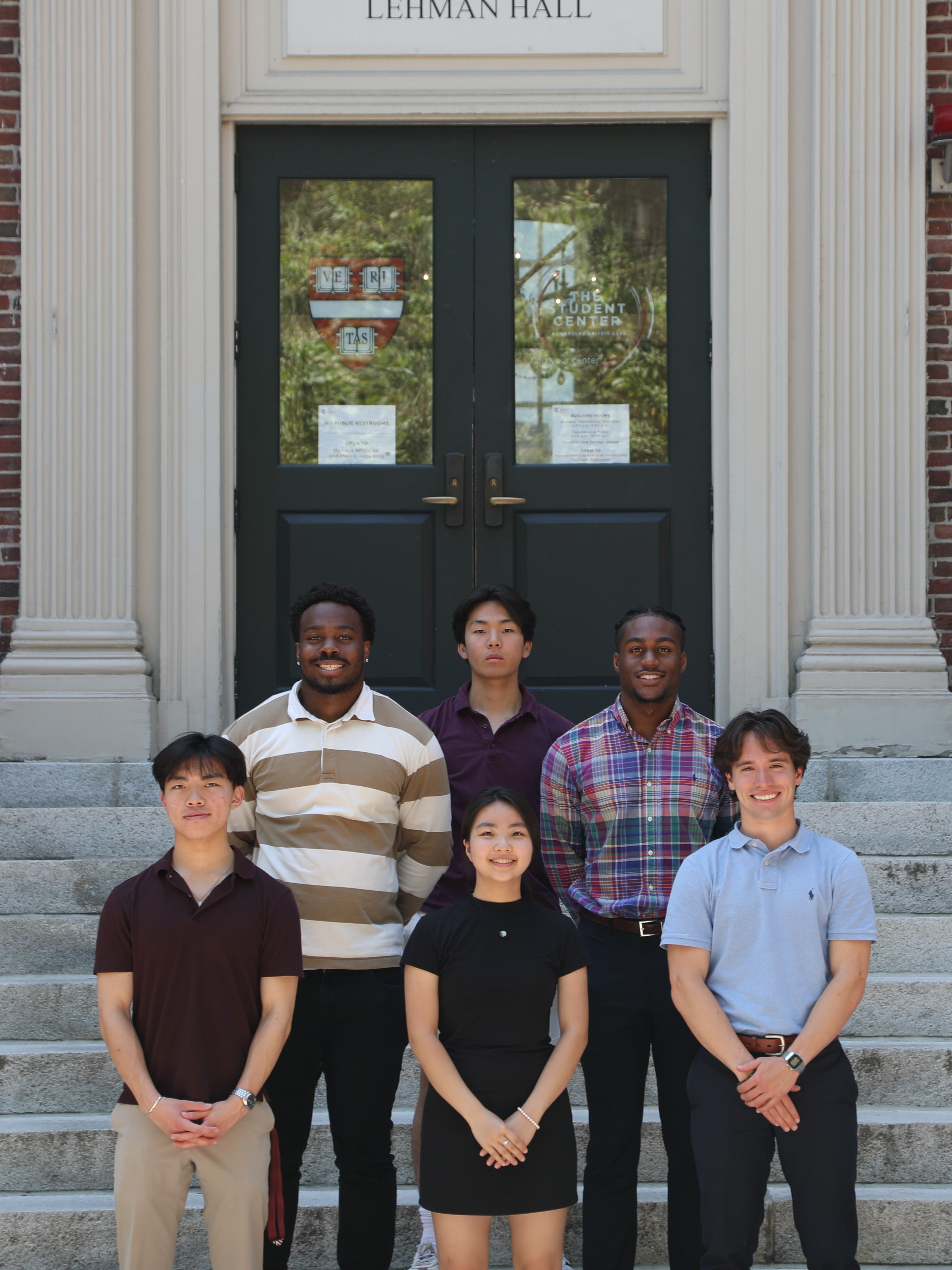PSYCHOLOGY
A societal change in dynamics: The trigger of GAD for GENZs during COVID
Audrey Yu
Published: 21 June 2022 | Download
Student's Published Works
Abstract
With over 497,846,771 cases from the deadly virus of COVID-19, and over 6 million deaths, it is easy to grasp the magnitude of damage this virus has caused. Restrictions on free movement and regulations for isolation are 2 factors that heavily affected our generation, making it difficult for us to predict the changes that are yet to occur. The global pandemic has made unprecedented changes in our world, from the daily use of masks and hand sanitizers to the essential vaccination cards when traveling. However, there are also underlying problems taking place that are frequently overlooked - mental health conditions - for instance. ‘The Sacrificed Generation’ is the eye-catching title of a news article by The Guardian that emphasizes the profoundly negative impact of the pandemic on the current young generations that are being forced to keep up with the ever-shifting drawbacks. Mental health issues including depression, major anxiety issues and addiction were already present previously, alongside self-esteem issues or burdensome stress loads. The severity of COVID-19 has clearly caused numerous disruptions within our society including major evident mental health. This has triggered various symptoms of generalized anxiety disorder for the GEN- Z generation in the past few years.
Keywords: Anxiety, COVID
Introduction
The COVID 19 virus has gone through several mutations over the past 2 years, with deterioration of symptoms for patients (Frellick, 2022). Most recognizable of these variants have been named Alpha, Beta, and Omicron. The virus is known for its light to very heavy diverse symptoms; including fever, cough, chest pains, loss of taste and/or smell, sore throat and more (DePietro, 2021). With its high transmission rate, the number of confirmed cases has rapidly increased in the course of 2020 until now (Visual and Journalism team, 2022). Hence, each country’s government has implemented distinct regulations according to their country's situation. With over 100 countries having imposed a full or partial lockdown and tight regulations implemented in each city, majority sections of the population globally were showing symptoms of panic, as seen by hoarding of toilet paper and panic-buying daily essentials.
Generalized Anxiety Disorder
What is GAD?
Generalized anxiety disorder, also known as GAD is a long-term condition where exaggerated worry, tension and hyperventilating is displayed by one (Wandler, 2022). Patients of GAD experience constant anxiety, causing them to feel anxious due to an extensive variety of situations and problems. Some common symptoms of GAD include feeling dizzy, having difficulty concentrating or sleep and health palpitations (Wandler, 2022). The physical signs and symptoms may comprise muscle tensions, trembling, twitching and sweating (Wandler, 2022). Research from the National Health Service of the UK has shown that GAD could be due to overactivity in the areas of our brain which focuses on emotions and behaviors, inherited genes and painful or traumatic experiences previously (Margo, 2015). This condition has affected over 6.8 million adults and due to its difficult nature of treating, it has a relatively low treatment rate (Wandler, 2022).
Factors affecting GAD
Generalized anxiety disorder can be diagnosed through a mental health clinician where diagnosis and a comprehensive assessment will be conducted to help clarify the diagnosis (Casarella, 2021). There are various factors that could spark this disorder. The common factors include family background, genetic predisposition, social influences, and different lifestyle factors (Meek, 2021). Genetics could play a strong role as certain genetic markers could have been passed down. Research has shown that first degree relatives or family members of individuals with GAD have a high chance of developing anxiety disorder and mood swings (Wandler, 2022). Life experiences such as experiencing trauma and uncomfortable situations could also lead to a development of GAD (Meek, 2021). Life events connected to deep emotions such as humiliation, feelings of loss, danger and more are important events which act as predictors of GAD (Wandler, 2022). Heavy workload, stress and caffeine are a part of the daily routine for a majority of people and may affect the degree of GAD experienced by them. These factors may be powerful triggers with immense impact on individuals and should accordingly be considered more often when relying on the treatment of GAD. Studies have also shown that GAD is twice as common in women than men, as there is a significant difference in terms of anxious thoughts between males and females (Bahrami, 2011). Results from PubMED Central (2014) have shown that females are more likely to be anxious as they have more metacognitive beliefs, having a strong mindset that the worries need to be avoided (Catuzzi & Beck, 2014).
Impact of COVID 19 on anxiety disorders
As mentioned previously, COVID restrictions have caused an immense effect on different households as well as governments in each and every country. However, to what extent have these regulations affected the global prevalence of anxiety levels? News article from WHO published in March 2022 amplifies that only within the first year of COVID, the global level of anxiety and depression spiked by an enormous 25%. According to WHO (2022), the main factors affecting such change include gaps in health care, multiple stress factors and much more. The stress levels may be caused by enormous changes like the large unemployment rate, feeling powerless, the continuous updates on fatalistic news etc. COVID-19 became a tremendous challenge for multitudinous countries. As a result, many local and international economies were struggling (WHO, 2022). Students around the world have also reportedly felt more stress during situations such as online learning, since there is an overestimation and pressure from teachers and/or parents.
Generation Z
The Generation Z (henceforth, GEN- Z) is called the ‘The most anxious generation’ (Butler, 2021). GEN-Zs are the generation born from 1997 to 2012. Members of this generation are diverse in many perspectives due to the modernization of our society along with medias (Francis & Hoefel, 2018). Our current society heavily depends on social media and constant news coverage, where they were raised around stronger social media platforms. The substantial difference of portrayed life online versus in person has increased GAD to an unparalleled level in history (Silard, 2021). A study conducted in 2018 by Center for Addiction and Mental health (CAMH), has shown that there has been an evident increase in mental health conditions recently; the trend is correlated with the increased use of social media and our dependence on technology. Our prominent reliance on technology has resulted in less social interactions in real life, pressuring adolescents to embody attributes such as putting up false images and upward comparison (Zhao & Zhou, 2021). Furthermore, using social media non-stop could disrupt an individual’s sleep routine, which is a prerequisite for a healthy lifestyle (Weatherspoon, 2019). The continuous excessive amount of content online could also escalate the inner feeling of loneliness and isolation between peers (Silard, 2021), which leads to many unhealthy thoughts or health issues for young people. GEN-Zs can barely leave their devices alone, even knowing the harmful effect it has on their mental health.
COVID-19 impact on GEN-Z
COVID-19 is a significant chronicle of our generation; the strenuous impact of being trapped within homes has immensely changed the normal usage of social media for GEN- Zs. A poll conducted by Web MD (2021) titled ‘Gen Z Most Stressed by Pandemic’, revealed that around 46% of the GEN- Z age group has stated that COVID has become an obstacle for pursuing their education as well as their career goals. Furthermore, about 45% of the respondents found it difficult to maintain good relationships over the hard period of time (Vultaggio, 2021). A study conducted in the UK from March to May 2020 showed how being in lockdown with social media has heightened the withdrawal from social media due to the platforms being too overwhelming (Liu et al., 2021). Numerous researches have also shown how stress was affecting various aspects of each individual’s life. Generation Z expressed their feelings towards the catastrophic impact as ‘a roller coaster’, ‘terrifying’, ‘burnout’ and much more (Butler, 2021). With great demands from the previous generation and lack of support from them, GEN-Zs are often left alone to face their disturbed mental state. The lack of spontaneous socio-physical interactions has now resulted in diverse teenagers or young adults feeling entrapped (“We are facing a global health crisis”, n.d.). An interview of a student at a University in Wales in 2021 unveiled how university students turned to antidepressant drugs due to their persistent decline in mental health (Margo, 2015). However, without professional declaration or medical help, these antidepressants may have long-term after-effects on their health. The long-term effects may lead to serious potential health risks including loss of appetite, dizziness, indigestion, insomnia and many more. These are all due to the slight changes in our brain structure and how it functions, which could result in unhealthy mental effects on our brain (Margo, 2015). A journal published in 2022 titled ‘Neuropharmacology’ has shown that drugs will decrease the volume of principal regions in our brain. The two sectors affected are the anterior cingulate and hippocampus. The anterior cingulate cortex is the area of the brain which controls and regulates our moods, while the hippocampus is where registration as well as consolidation of memory takes place (Margo, 2015).
Conclusion
As part of our generation, actions should be taken to raise awareness about the rise of GAD in the past few years. Individuals with GAD symptoms should not be randomly taking antidepressants; proper official diagnosis from the clinic should be given out before taking medical treatments with long term risks. Although cases are still rising in most countries, governments now have better experience with imposing COVID protocols and policy strategies to help overcome the barriers for social interactions. Local governments are now able to overcome similar challenges, in addition to far better medical healthcare backups. All of this could help assist in encouraging more social interactions to help reduce the time spent on social media. Social media detox should be encouraged to stimulate new generations to have face-to-face interactions as an alternative. The presence of ingroup or outgroups have proved to drastically reduce stress levels, especially being out with friends and close ones, which would allow individuals to feel more accepted. Ingroups refers to individuals who are identified as members of a certain group with a positive attitude being returned by the group. This allows them to have a sense of belonging. To help reduce the drastic change in GAD conditions, opening borders and social events could ensure a safer environment for individuals to interact. Some limitations of this research could be the different factors such as genetics, workload or eating habits could have a higher impact than the effect from the COVID pandemic. Further research regarding the different human behaviors in each generation during the pandemic could possibly provide a better understanding of possible solutions to in improve the degree of generalized anxiety which affects individuals.
Bibliography
Bahrami, F., Yousefi, N. (2011). Females Are More Anxious Than Males: a Metacognitive Perspective. National Library of Medicine. Retrieved April 15, 2022, from https://www.ncbi.nlm.nih.gov/pmc/articles/PMC3939970/
Butler, K., Bannock, C. (2021). 'A sacrificed generation': Psychological scars of Covid on young may have lasting impact. The Guardian. June 2. Retrieved April 16, 2022, from https://www.theguardian.com/world/2021/jun/02/a-sacrificed-generation-psychological-scars-of-covid-on-young-may-have-lasting-impact
Campion, J., Javed, A., Sartorius, N., Marmot, M. (2020). Addressing the public mental health challenge of COVID-19. The LancetPsychiatry. June 9. Retrieved April 4, 2022, from https://www.thelancet.com/journals/lanplh/article/PIIS2215-0366(20)30240-6/fulltext#%20
Casarella, J.. (2021). Generalized Anxiety Disorder. WebMD. September 14. Retrieved march 29, 2022, from https://www.webmd.com/anxiety-panic/guide/generalized-anxiety-disorder
COVID-19 pandemic triggers 25% increase in prevalence of anxiety and depression worldwide. (2022). WHO. March 2. Retrieved June 17, 2022, from https://www.who.int/news/item/02-03-2022-covid-19-pandemic-triggers-25-increase-in-prevalence-of-anxiety-and-depression-worldwide
Catuzzi, J., Beck, K. (2014). Anxiety vulnerability in women: a two-hit hypothesis. PubMed.gov. February 8. Retrieved June 19, 2022, from https://pubmed.ncbi.nlm.nih.gov/24518489/#:~:text=Females%20are%20twice%20as%20likely,to%20develop%20an%20anxiety%20disorder.
Gen Z Most Stressed by Pandemic, Poll Says. WebMD. Retrieved April 16, 2022, from https://www.webmd.com/lung/news/20211207/gen-z-most-stressed-pandemic-poll#:~:text=About%2046%25%20in%20the%20Gen,and%2031%25%20of%20Gen%20X
DePietro, M. (2021). Is chest pain due to COVID-19, anxiety, a heart attack, or another cause? MedicalNewsToday. April 27. Retrieved June 13, 2022, from https://www.medicalnewstoday.com/articles/chest-pain-covid
Everyone Included: Social Impact of COVID-19. (n.d.). United Nations. Retrieved April 26, 2022, from https://www.un.org/development/desa/dspd/everyone-included-covid-19.html
Frellick, M. (2020). COVID at 2 Years: Preparing for a Different 'Normal'. WebMD. January 20. Retrieved June 13, 2022, from https://www.webmd.com/special-reports/covid-second-anniversary/20220120/pandemic-strategies
Francis, T., & Hoefel, F. (2018). 'True Gen': Generation Z and its implications for companies. Mckinsey. November 12. Retrieved June 24, 2022, from https://www.mckinsey.com/industries/consumer-packaged-goods/our-insights/True-gen-generation-z-and-its-implications-for-companies
Kola, L., Kohrt, B. A., Hanlon, C., Naslund, J. A., Sikander, S., Balaji, M. Patel, V. (2021). COVID-19 mental health impact and responses in low-income and middle-income countries: reimagining global mental health. The Lancet Psychiatry, 8(6), 535-550 Retrieved from April 04 2022. https://www.sciencedirect.com/science/article/pii/S2215036621000250
Meek, W. (2021). Generalized Anxiety Disorder: Causes and Risk Factors. Verywellmind. October 12. Retrieved June 19, 2022, from https://www.verywellmind.com/gad-causes-risk-factors-1392982
Liu, H., Liu, W., Yoganathan, V., Osburg, V. S. (2021). COVID-19 information overload and generation Z's social media discontinuance intention during the pandemic lockdown. Technological Forecasting and Social Change, 166, 120600. Retrieved from April 15. https://www.sciencedirect.com/science/article/pii/S0040162521000329
Mann, F. D., Krueger, R. F., Vohs, K. D. (2020). Personal economic anxiety in response to COVID-19. Personality and Individual Differences, 167, 110233. Retrieved from April 05 2022 https://www.sciencedirect.com/science/article/pii/S0191886920304220
Margo, J. (2015). What antidepressants can do to a brain that is not depressed. Financial Review. September 8. Retrieved april 25, 2022, from https://web.archive.org/web/20151231153754/http://www.afr.com/lifestyle/health/mens-health/what-antidepressants-can-do-to-a-brain-that-is-not-depressed-20150907-gjh8mb#ixzz3lC1cCEXr
Silard, A. (2021). How Social Media Exploits Our Loneliness. Psychology Today. June 14. Retrieved June 20, 2022, from https://www.psychologytoday.com/us/blog/the-art-living-free/202106/how-social-media-exploits-our-loneliness
Twenge, J. M., Spitzberg, B. H., & Campbell, W. K. (2019). Less in-person social interaction with peers among U.S. adolescents in the 21st century and links to loneliness. Sage Journals. March 19. Retrieved April 9, 2022, from https://journals.sagepub.com/doi/full/10.1177/0265407519836170#abstract
Visual and Journalism team. (2022). Covid map: Coronavirus cases, deaths, vaccinations by country. BBC News. Retrieved July 12, 2022, from https://www.bbc.com/news/world-51235105
Wandler, K., Dr (Ed.). (2022). Generalized Anxiety By the Numbers: Statistics and Facts You Should Know. The Recovery Village. March 26. Retrieved June 13, 2022, from https://www.therecoveryvillage.com/mental-health/generalized-anxiety-disorder/generalized-anxiety-statistics/
Weatherspoon, D. (2019). Why sleep is essential for health. MedicalNewsTodat. May 31. Retrieved June 20, 2022, from https://www.medicalnewstoday.com/articles/325353
Whiteman, H. (2015). Social media: how does it affect our mental health and well-being? MedicalNewsToday. June 10. Retrieved April 28, 2022, from https://www.medicalnewstoday.com/articles/275361
Zhao, N., & Zhou, G. (2021). COVID-19 Stress and Addictive Social Media Use (SMU): Mediating Role of Active Use and Social Media Flow. Frontiers. February 9. Retrieved June 17, 2022, from https://www.frontiersin.org/articles/10.3389/fpsyt.2021.635546/full





